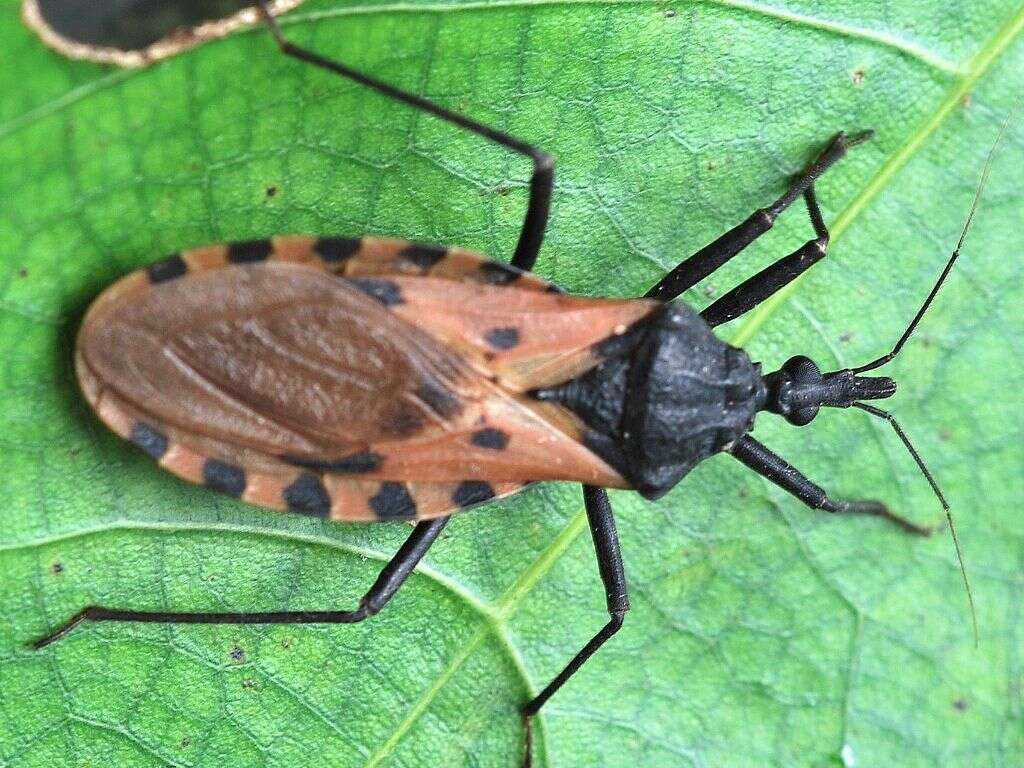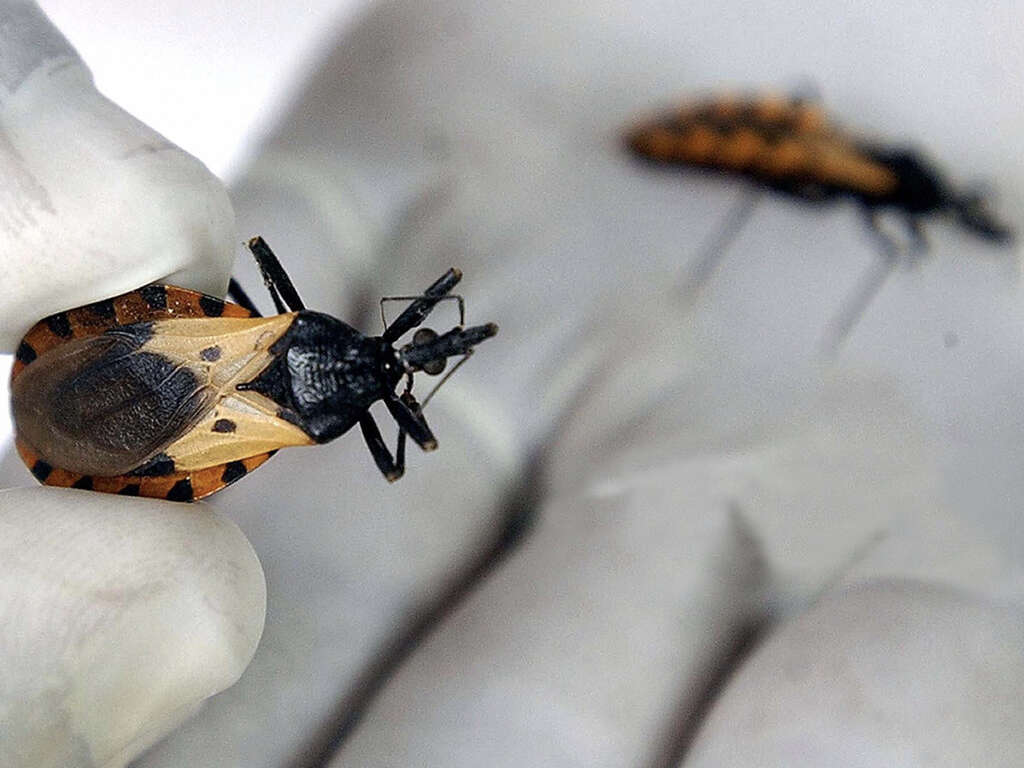10 Chagas Disease Symptoms
Chagas disease, or trypanosomiasis, is a disease caused by a parasite known as Trypanosoma Cruzi. The disease is spread by insects of the Triatominae family, also known as kissing or assassin bugs. The symptoms differ according to the different stages of the infection. There are mild to no symptoms in the early stage of the disease. The affected individual then enters the chronic phase of the disease after 8 to 12 weeks of infection. Some go on to develop symptoms 10 to 30 years after the initial infection.
The insects that spread this disease can be found in Argentina, Bolivia, Chile, Paraguay, Brazil, Colombia, Central America, and Venezuela. In 2015, regions such as Central America, Mexico, and South America were estimated to have 6.6 million cases. It was also estimated to have caused 8,000 deaths that year. Most individuals who have the disease are poor and are not aware of the infection.
Other methods that can spread the disease include organ transplantation, blood transfusion, consumption of contaminated food, and vertical transmission. The diagnosis of the early stage of the disease involves finding the parasite in the blood with the help of a microscope. Chronic disease can be diagnosed by the identification of antibodies for the parasite in the blood.
Preventative measures include increasing awareness of the bugs, eliminating the insects, and avoiding being bitten. The use of bed nets and insecticides can be helpful. Screening of blood before using it for transfusions is also performed. Treatment for early infections includes medications such as nifurtimox and benznidazole. The longer the disease has been in the body, the less effective the medication. However, medications can delay end stage symptoms in chronic disease.
Symptom #1: Fever
Fever or a febrile response is defined as a higher than normal set point in body temperature. This increase in temperature causes a feeling of coldness and muscle contractions in an effort to produce and conserve heat. A fever can be seen in viral, bacterial, and parasitic infections. It also occurs from non-infectious causes such as cancer, vasculitis, side effect of medications, and deep vein thrombosis.
A low fever is the body’s natural response to fight off an infection, as the increase in temperature enhances the immune system. To manage a fever, antipyretics such as paracetamol (acetaminophen) and non-steroidal anti-inflammatory drugs (NSAIDs) can be used.
Symptom #2: Lymphadenopathy
Lymphadenopathy refers to lymph nodes that are abnormal in consistency, size, or number. Lymph nodes are part of the immune system that function to filter pathogens. Lymphadenopathy can occur with acute infections, cancers, autoimmune disorders, bites from insects or animals, and more.
Swollen lymph nodes occur in Chagas disease as part of the acute phase of the disease. Other associated symptoms include fever, headaches, nausea, vomiting, diarrhea, and more.

Symptom #3: Headaches
Headaches refer to pain in any region of the neck and head. A headache is a very common symptom appearing in various situations such as dehydration, hunger, viral infection, brain tumor, and more. There are many types of headaches such as tension type headaches, cluster headaches, and migraines. In Chagas disease, headaches are part of the acute phase of the disease.
Headaches can be managed symptomatically with painkillers such as paracetamol (acetaminophen) and NSAIDs such as ibuprofen and naproxen sodium.
Symptom #4: Swelling
Since Chagas disease occurs due to a parasitic infection from the bite of an insect, one of the most important yet unnoticeable symptoms of the condition is swelling and itching from an insect bite. The bite may also trigger an allergic reaction in some individuals causing redness, swelling, and itching.
In Chagas disease, the bites are usually painless and can affect all parts of the body, especially around the mouth or eyes. There are often multiple bite marks in the same area. Bites from the kissing or assassin bug can be difficult to differentiate from other types of bug bites.

Symptom #5: Heart Failure Symptoms
In Chagas disease, heart failure is seen in patients who have had the disease for 10 to 30 years. The failure occurs due to the enlargement of the ventricles of the heart, which means the heart is no longer able to pump blood sufficiently to meet the body’s needs.
This causes symptoms such as fatigue, shortness of breath, leg swelling, and more. There can also be chest pain. Treatment for heart failure depends on the severity of the condition.
Symptom #6: Difficulty Swallowing
Difficulty swallowing can occur in Chagas disease due to megaesophagus or esophageal dilation, which prevents the esophagus to propel food and liquid properly from the mouth to the stomach.
This causes food to become lodged in the esophagus where it may decay, be regurgitated, or be inhaled into the lungs. This can cause aspiration pneumonia and other complications.

Symptom #7: Constipation
Constipation is the infrequent or hard bowel movements which are often associated with abdominal bloating and pain. Causes of constipation include hypothyroidism, pelvic floor disorders, celiac disease, colon cancer, diverticulitis, and more.
In Chagas disease, constipation usually lasts for a long time. This is due to dilation of the large colon and paralysis of the peristaltic movements of the bowel. In advance cases of megacolon, the feces can consolidate to become hard masses known as fecalomas.
Symptom #8: Abdominal Pain And Bloating
The abdomen can be divided into nine regions: right hypochondrium, epigastric, left hypochondrium, left lumbar, umbilical, right lumbar, right iliac, suprapubic, and left iliac. Abdominal bloating occurs when the abdomen feels full and tight due to the accumulation of gas.
Both abdominal pain and bloating can occur in Chagas disease due to megacolon, which is an abnormal dilation of the colon that is often accompanied by the paralysis of the peristaltic movements in the bowel.

Symptom #9: Fatigue And Myalgia
Fatigue is a gradual feeling of tiredness which can be alleviated by rest. Fatigue can be divided into physical or mental fatigue. Physical fatigue is the transient inability to maintain peak physical performance, while mental fatigue is the temporary decrease in optimum cognitive performance.
Myalgia is a term describing muscle pain. Both fatigue and myalgia can be seen in many conditions such as viral infections and chronic fatigue syndrome. Fatigue and myalgia in Chagas disease are both part of the acute phase of the disease.
Symptom #10: Diarrhea, Nausea, And Vomiting
Diarrhea is defined as the occurrence of loose stools three or more times a day. Nausea is the unpleasant sensation where there is an urge to vomit. Vomiting is the involuntary expulsion of stomach contents through the mouse or nose.
These three symptoms (diarrhea, nausea, and vomiting) are common and non-specific symptoms that are often seen in various conditions such as gastroenteritis and food poisoning. In Chagas disease, these symptoms are part of the acute phase where they can last several weeks to months.











